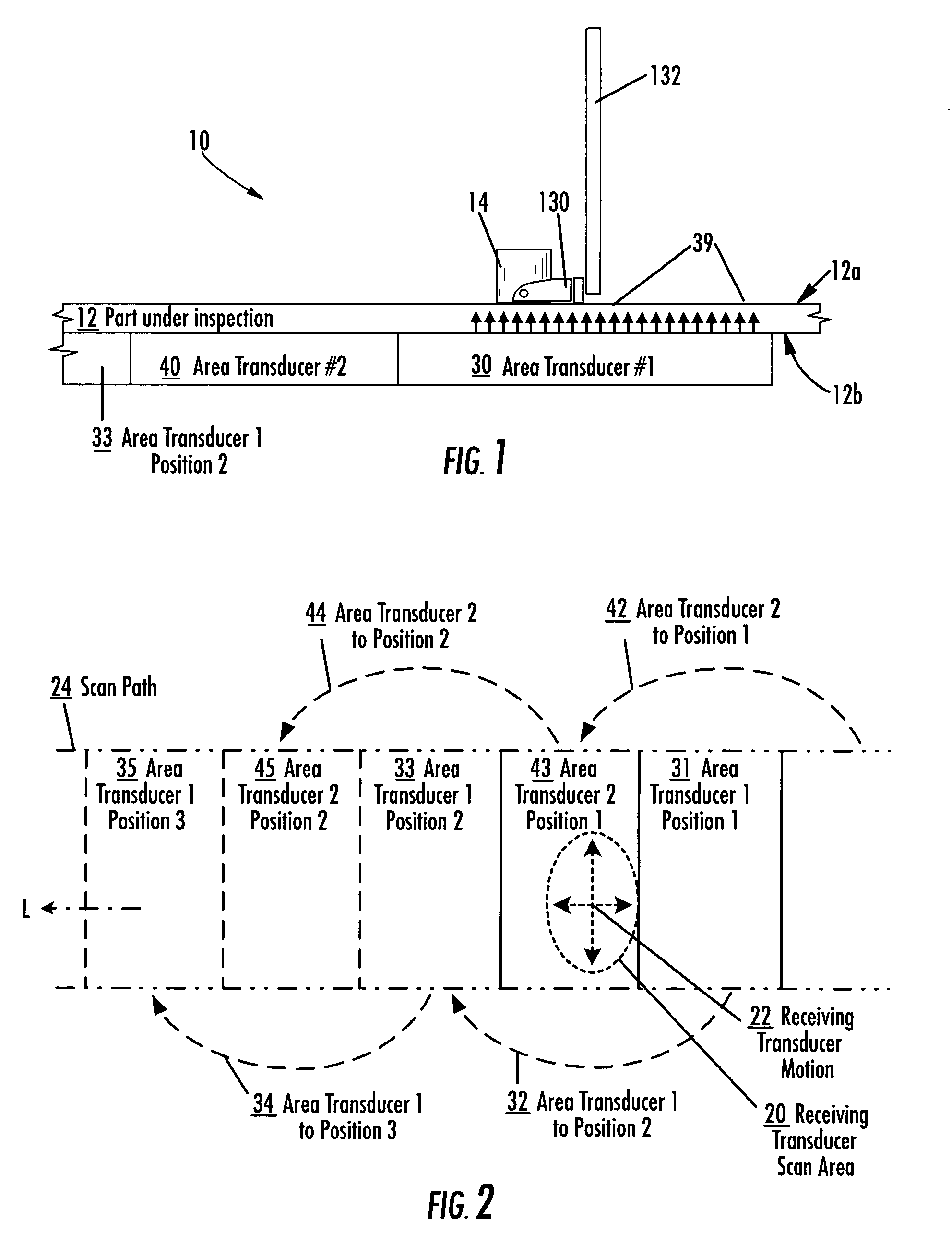Apparatus and method for area limited-access through transmission ultrasonic inspection
a transmission ultrasonic and apparatus technology, applied in ultrasonic/sonic/infrasonic diagnostics, instruments, specific gravity measurements, etc., can solve the problems of time-consuming manual scanning of structures, prone to human error, and semi-automated inspection systems, so as to reduce the necessary sophistication of motion control systems, reduce the cost, and increase the speed and efficiency
- Summary
- Abstract
- Description
- Claims
- Application Information
AI Technical Summary
Benefits of technology
Problems solved by technology
Method used
Image
Examples
Embodiment Construction
[0027]The present inventions now will be described more fully with reference to the accompanying drawings, in which some, but not all embodiments of the invention are shown. Indeed, these inventions may be embodied in many different forms and should not be construed as limited to the embodiments set forth; rather, these embodiments are provided so that this disclosure will satisfy applicable legal requirements. Like numbers and variables refer to like elements and parameters throughout.
[0028]An apparatus of the present invention can inspect a variety of structures formed of various materials. Embodiments of the present invention provide capability for non-destructive inspection of structures with limited access, such as an inlet duct for an Unmanned Combat Air Vehicle (UCAV) or an F-35 tactical fighter where the inlet duct is fabricated as a composite sandwich structure, providing only limited access to the backside of the inlet duct for NDI. In embodiments where the apparatus relie...
PUM
| Property | Measurement | Unit |
|---|---|---|
| widths | aaaaa | aaaaa |
| widths | aaaaa | aaaaa |
| structure | aaaaa | aaaaa |
Abstract
Description
Claims
Application Information
 Login to View More
Login to View More - R&D
- Intellectual Property
- Life Sciences
- Materials
- Tech Scout
- Unparalleled Data Quality
- Higher Quality Content
- 60% Fewer Hallucinations
Browse by: Latest US Patents, China's latest patents, Technical Efficacy Thesaurus, Application Domain, Technology Topic, Popular Technical Reports.
© 2025 PatSnap. All rights reserved.Legal|Privacy policy|Modern Slavery Act Transparency Statement|Sitemap|About US| Contact US: help@patsnap.com



